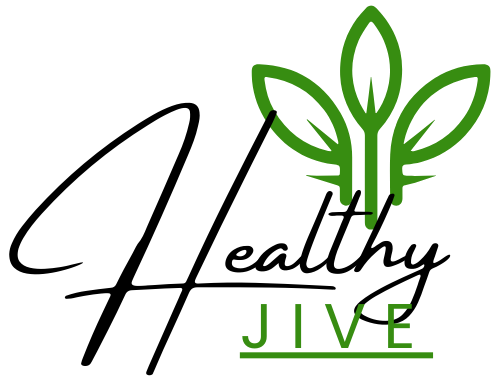

Building a robust core is not just about achieving a six-pack. Core strength plays a crucial role in maintaining stability, preventing back injuries, and enhancing overall physical performance. According to Centers for Disease Control and Prevention, one of the most effective core-strengthening exercises is the Plank1.
Planks are not just about maintaining a static position. There are numerous dynamic variations that can challenge your muscles from different angles, improve your balance, and break the monotony. From beginners to advanced fitness enthusiasts, there’s a plank variant for everyone.
This article introduces 15 unique plank variations, from the simplest to the most challenging, to help you build a rock-solid core.

1. Beginner’s Knee Plank
If you’re a newbie or haven’t practiced planks in a while, the Beginner’s Knee Plank is a great starting point. It reduces the strain on your lower back while still offering a solid core workout. As you grow stronger, you can gradually transition to the traditional forearm plank.
To perform the Beginner’s Knee Plank:
- Lie on your stomach, placing your forearms on the floor and aligning your elbows under your shoulders.
- Push your forearms against the floor and raise your torso, keeping your knees, toes, and elbows in contact with the floor. Maintain a neutral neck position and avoid lifting or dropping your hips by engaging your core.
- Hold this position for 30 seconds or as long as you can, ensuring proper form.
You might want to use a yoga mat for added comfort for your elbows and knees.

2. Straight-Arm Knee Plank
A step above the Beginner’s Knee Plank, the Straight-Arm Knee Plank requires slightly more arm and core strength. However, it’s still less demanding than a full plank.
To perform the Straight-Arm Knee Plank:
- Lie flat on your stomach, bend your arms at the sides, place your hands directly under your shoulders, and keep your palms firmly on the floor.
- Push against the floor to lift your torso and straighten your arms. Keep your knees partially bent and in contact with the floor.
- Maintain this position for 30 seconds or as long as you can, ensuring proper form.

3. Forearm Plank
The Forearm Plank is your entry into advanced planking. It targets your entire core and effectively engages your glutes and hamstrings.
Here’s how to do a Forearm Plank:
- Lie on your stomach, positioning your forearms directly under your shoulders.
- Lift your torso by pressing into your forearms and knees. Engage your core and maintain a neutral spine.
- Tuck your toes under and lift your knees, aligning your body in a straight line.
- Hold this position for 20-30 seconds, gradually increasing the duration to 1 minute or more.
Keep your gaze fixed approximately a foot ahead of you to maintain a neutral neck position.

4. Straight-Arm Plank
The Straight-Arm Plank, also known as Full Plank, is a progression from the Forearm Plank. It requires more strength and stability.
To perform a Straight-Arm Plank:
- Begin on all fours, aligning your hands under your shoulders and positioning your knees slightly behind your hips.
- Push against the floor to lift one knee at a time and straighten both legs. Your body should resemble the upward position of a pushup.
- Hold this position for 30 seconds or longer, ensuring proper form throughout.
5. Forearm to Full Plank
The Forearm to Full Plank variation is an excellent way to add dynamic movement to your plank routine.
To perform the Forearm to Full Plank:
- Start in the Forearm Plank position.
- One arm at a time, straighten your arm and lift yourself into the full plank position.
- Return to the Forearm Plank position by bending one arm at a time.
- Repeat the transition for 30 seconds, performing 2-3 sets.
To maintain stability, engage your core and minimize hip sway as you alternate positions.
6. Side Plank
The Side Plank is a fantastic exercise that predominantly works your obliques and hip abductors.
To perform a Side Plank:
- Lie on one side with your legs straight and your hips, knees, and feet stacked. Position your elbow directly under your shoulder.
- Push against the floor to lift your torso. Keep your core tight and your hips lifted.
- Try to maintain this position for 20-30 seconds, then switch sides.
To increase the challenge, you can straighten your arm or raise and lower your hips.
7. Walking Plank
The Walking Plank enhances your core strength and works your upper and lower body muscles, like the deltoids, glutes, quads, hamstrings, and calves.
Here’s how to do a Walking Plank:
- Start in a full plank position, positioning your hands under your shoulders.
- Begin shifting laterally by moving your right hand and foot to the right.
- Lift your left hand and foot to meet in the center and return to the plank position.
- Repeat this movement for 5 steps to the right and then 5 to the left.
Ensure you maintain proper form and keep your core tight throughout the exercise.
8. Plank with Shoulder Tap
The Plank with Shoulder Tap adds an extra challenge to the traditional Straight-Arm Plank. This variation targets several muscle groups, including your abs, back, glutes, hamstrings, and quads.
To perform a Plank with Shoulder Tap:
- Start in a traditional Straight-Arm Plank position.
- Keeping your core tight, lift your right hand off the floor and touch your left shoulder.
- Return your right hand to the floor, then repeat with your left hand.
- Continue alternating hands for 20-30 seconds.
Ensure that your body stays in a straight line throughout the exercise.
9. Reverse Plank
The Reverse Plank is a fantastic full-body workout that targets your glutes, hamstrings, abs, triceps, and shoulders.
Here’s how to do a Reverse Plank:
- Sit on the floor with your legs extended. Place your hands behind you, with your fingertips pointing towards your feet.
- Engage your core and arms to lift your hips, forming a straight line from your heels to your shoulders.
- Hold this position for 20-30 seconds or as long as you can while maintaining proper form.
10. Spider-Man Plank
The Spider-Man Plank is a fun yet challenging variation that targets your obliques, abs, and lower body.
To perform a Spider-Man Plank:
- Start in a full plank position.
- Bring your right knee towards your right elbow, then return to the plank position.
- Repeat this movement for 8-12 reps on each side, increasing the number of reps as you get stronger.
11. Plank with Alternating Knee to Elbow
This Plank variation is another excellent way to target your obliques.
To perform a Plank with Alternating Knee to Elbow:
- Start in a full plank position.
- Lift one leg and bring your knee towards the opposite elbow.
- Return to the starting plank position and repeat with the other leg.
- Continue alternating sides for 20-30 seconds, aiming for 2-3 sets.
12. Plank with a Row
The Plank with a Row is a fantastic full-body workout that targets your upper body, core, and lower body.
To perform a Plank with a Row:
- Grab two dumbbells of your choice and get into a full plank position.
- Lift the dumbbell with your right arm towards your waist, then return to the starting position.
- Repeat the movement with your left arm.
- Continue alternating arms for 8-12 reps on each side, aiming for 2-3 sets.
Maintain a tight core throughout the exercise to control the dumbbell row.
The Final Word
Planks are an excellent addition to any fitness routine, offering significant benefits in terms of core strength and overall stability. Whether you’re a beginner or a pro, these plank variations will keep your workouts challenging and exciting.
Remember, proper form is critical to prevent injury and ensure maximum benefits. Always consult with a certified trainer or strength coach if you’re unsure about your form or if you’re starting a new workout program.
